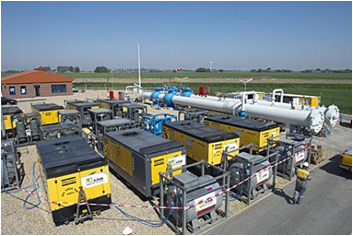THE BEST SOLUTION FOR OPTIMAL DEW POINT
Cleaning and Drying of pipelines and installations need to be carried out for a number of reasons, often during operation and after hydro testing and we offer a number of flexible drying solutions that can be adapted to suit the specific needs of the client, the situation and technical realities.
All drying operations are controlled with a scala of different types of dew point testers and regardless of size and pressure regime of the system, we are able to measure the current pressure and/or atmospheric dew point in a system at any moment.
Swabbing
Swabbing is carried out to enlarge the evaporation area of water within the system by spreading it over the pipe wall with a view to enlarging the contact area between the water and the drying media. Several types of pigs are used for this method.
Super dry compressed air
This is the most common method for drying pipelines in which dew point controlled desiccant dryers are used to compress air up to dew points of -60°C and blown into the pipeline with a high flow. In combination with swabbing pigs, pipelines can be dried to proven dew points of -40°C.
Super dry chilled air
Another method of drying with super dry air is to chill the air with chilling units. Instead of compressed air and move the air into the pipeline with ventilators. However, since the flow is high but the pressure is low, combining this with swabbing pigs is a not always possible.
Super dry hot air
If time is a major factor, heaters can be used to heat compressed dry air to raise the temperature in the system thereby inducing evaporation of water more quickly and easily.
Vacuum drying
Vacuum drying is a straightforward technique whereby, the pressure in the system is held very low to lower the dew point while controlling the temperature to facilitate drying. This is a particularly effective in complex systems where a proper flow cannot be achieved such as “non-piggable” systems and those with localized, large quantities of water.
Methyl Ethyl Glycol (MEG) batching
This process uses the hygroscopic effect of MEG to dry the pipeline or installation by propelling MEG through the pipeline using natural gas, nitrogen, dry air or other product. The pipe wall is completely dry in the process and limits the risk of water freezing or hydration of product.




